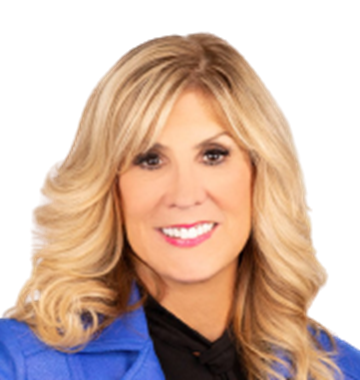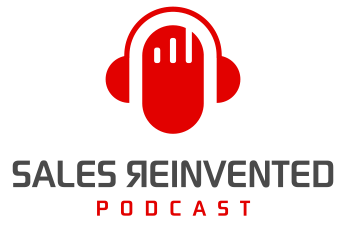Episode #392: Rhonda Sher

Meet
Rhonda Sher
Rhonda Sher is a LinkedIn Strategist and the Founder of The Sher Method – The 3 Step System to Leverage LinkedIn. She is the author of 4 books and a sought-after speaker, trainer, consultant. Since 2009, Rhonda has taught entrepreneurs, coaches and professionals how to stop leaving money on the table and to start standing out when it comes to LinkedIn.
Our Mission Is To Change The Negative Perception Of Sales People
Our Vision Is A World Where Selling Is A Profession To Be Proud Of
70–80% of the time you Google someone, their LinkedIn profile will show up on the first page of results. And people are 2x more likely to believe what’s on LinkedIn than anyplace else. A stellar profile is absolutely essential, regardless of industry. So how do you tell your professional story on LinkedIn in a way that speaks to your ideal client? Rhonda Sher shares some great ideas in this episode of Sales Reinvented.
Outline of This Episode
- [1:00] Why a compelling LinkedIn profile is important
- [1:42] Why your photo, headline, and banner are key
- [2:36] How to tell your professional story on LinkedIn
- [4:37] Balancing professionalism and personality
- [5:51] How often to update your LinkedIn profile
- [7:09] Tools to build a better LinkedIn profile
- [9:17] Rhonda’s top LinkedIn profile dos and don’ts
- [13:22] Leverage LinkedIn as a website
How to tell your professional story on LinkedIn
Your “about” section should tell your story. Make sure the first 2–3 lines are impactful so people click on “see more.” Use this section to give people a way to relate to you. If you look at Rhonda’s profile, she says “I married the same man twice & used LinkedIn to retire him from his corporate job.” It’s about grabbing someone’s attention and capturing their curiosity
She expertly blends the professional—who she is, why she does what she does, and why you should trust her—with the personal. Why not share something interesting about you? What makes you seem authentic? What ties your personal story to your professional story? Let your personality show.
Balancing professionalism and personality
Step into the shoes of the person reading your profile. You know who your ideal client is. You should know their pain points. Write your profile for that person. If you’re someone who’s okay with showing your personality, infuse it into your profile. Rhonda has a client who’s a land banker. In her profile, she talked about how she used the concept of land banking to start an orphanage in Vietnam. It’s an interesting conversation starter.
Rhonda’s top LinkedIn profile dos and don’ts
Rhonda shares some great tips in this episode:
- Make sure your contact information is available on LinkedIn.
- Make sure you have a LinkedIn headline that tells people what you do and the results you get. Everyone’s title is “Founder and President.” How can you stand out?
- Don’t ignore the featured section. Include case studies and video testimonials. You could include a video of you being interviewed in the shoes of your ideal client, answering their questions so they know they’re in the right place.
- Don’t leave your profile without a banner. Rhonda likes to say those people are in the LinkedIn “Witness Protection Program.”
- Make sure your experience section is current with recommendations that relate to what you’re currently doing.
- Remember that LinkedIn isn’t your resume. It’s a place to share who you are, the problem you solve, and why you are the only logical choice that they’re looking for. Make sure your profile positions you as the go-to choice.
Leverage LinkedIn as a website
Rhonda worked with a client who’s a family law attorney. His firm folded but he wasn’t ready to retire. So he moved to another law firm where he was one of many. His LinkedIn profile was outdated. When someone searched for a family law attorney, his law firm came up—not him. He wasn’t differentiating himself.
So Rhonda helped him turn his profile into a mini website and positioned him as the logical choice for anything related to family law. If you’re on LinkedIn and part of a big firm that can’t differentiate you, leverage your LinkedIn profile as your website.
Clients started pouring in and he rebuilt his client base. He used LinkedIn to reach out to former clients as well. Using LinkedIn to position yourself as the expert.
Connect With Paul Watts
Audio Production and Show notes by
PODCAST FAST TRACK
https://www.podcastfasttrack.com
Learn More About Rhonda Sher
Are there any definitive guides or resources you recommend for crafting an effective LinkedIn profile?
Your LinkedIn profile is the first place people will “meet” you, therefore it’s critical that you always put your best foot forward. In addition, LinkedIn is constantly changing as, sometimes, the information about you is changing too. If you are a sales professional who wants to leverage the power of LinkedIn, I recommend investing in hiring a professional to either craft or upgrade your LinkedIn profile or taking a course that is current on how to do it.
In the realm of LinkedIn branding and sales, who do you most admire and why?
The person I most admire in the realm of LinkedIn branding and sales is Joe Apfelbaum. Joe is the creator of Evy.ai and is on the cutting edge of everything LinkedIn. He is relatable, accessible and a wealth of knowledge.
What are your top ten tips for someone looking to optimize their LinkedIn profile for sales – your golden
- Have a banner that reflects your business and your branding. It is the first thing that someone sees when they visit your profile.
- Have a professional photo with you smiling that is current and really looks like you.
- Have a LinkedIn headline that tells visitors to your profile what you do, who you serve, the results you get and is very specific to your target market.
- Write the about section in first person from the perspective of your ideal client or referral partner. Make it easy to read with bullet points and spaces. Make sure that the about section tells your prospects and referral partners what you can do for them as well as why you are the only logical choice for the service or product you offer.
- Use the Featured section to put your case studies, your video testimonials, your sizzle reel or videos that present you as the expert you are. Keep in mind that most people will not look past the first three items in this section so make sure what you put here is current, relevant and not just self-promotional. It should give visitors to your profile information about you that is relevant to them.
- Break up your experience section. If you do more than one thing in your current position, break this up so you can put as much detail as necessary in this section.
- Make sure you have current recommendations on your profile and that you give recommendations on a regular basis.
- Make sure you personalize your LinkedIn url so people can find you. Don’t use the LinkedIn default with all the letters and numbers.\
- If you don’t want people to know how old you are, don’t put the dates in your education. If you are not looking for a job, it is not required that you put the dates in. Just list the schools with your highest level of education first.
- Use the projects section to list your sales accomplishments and put a sentence in the About Section that tells visitors to read the Projects section to learn about your sales success stories.
What are the primary considerations that companies should be aware of regarding their employees’ representation on LinkedIn?
The primary considerations are whether their employees are using a banner consistent with the company branding/website and that their profile is written in a way that is consistent with the branding of the company. Companies should also check their employees’ LinkedIn profiles to see if they are working in another position at the same time or looking for another position.
Do you believe companies should provide specific training for employees to utilize LinkedIn effectively?
Yes, especially if they are in sales. LinkedIn is an amazing platform to build relationships and generate referrals and leads. If employees are taught how to utilize LinkedIn effectively, everyone wins.
Can you share some case studies or examples of how a well-crafted LinkedIn profile has significantly impacted a company’s sales or networking capabilities?
The company sales team were looking for prospects who were eligible to receive R&D Tax credits. The prospects for the salespeople were easily identified on LinkedIn using Sales Navigator. Once I upgraded their LinkedIn profiles – adding case studies, video and written testimonials and outlined the specific benefits of what the R&D credits were and how they could benefit the clients who took advantage of the, the sales professionals were able to book anywhere from 5-20 appointments a week. Prior to upgrading their profiles, prospects were confused about what the R&D tax credits were and if they applied to them or if they really worked. By answering all the questions in the minds of the prospects on the LinkedIn profile, the sales professionals were able to exceed all their sales quotas.
Another client was a small bank with a team of people in business development. Prior to the upgrade of the LinkedIn profile of the management team, connection requests to reach out to prospects on LinkedIn was very small – less than 2 out of 10 connection requests were accepted. After the profiles were upgraded, more than 5 out of every 10 connection requests were accepted. Once the connection was established, the bank management team members reached out with LinkedIn messages to start requesting appointments with a very high success rate.
LinkedIn is constantly evolving. Are there any new features or strategies that you’re currently delving into or recommend sales professionals should explore?
- Making use of the Featured Section to showcase case studies or add video testimonials of clients. I also recommend interacting with the posts of your ideal clients and referral partners by commenting on their posts, liking them and reposting when appropriate.
- Using AI for commenting and posting
- Sending video messages to connections to ask for an appointment in the “NO SALES ZONE” to get to know them.
How do you balance showcasing your hobbies and interests on LinkedIn, ensuring it complements your professional brand?
The balance happens when you tie the two together. For example, a client of mine use her land banking business to start an orphanage in Vietnam and shared that in the about section of her profile. You can also say, when I am not working, you can usually find me (and then add the activities) so it presents you as a well rounded individual or tell the story (briefly) of why you do what you do. An example of this is a personal injury attorney client of mine who was in five accidents and understands what it is like to be on both sides of an auto accident – the victim and the attorney fighting for the victim. The secret is tying it together.
For listeners eager to learn more, what’s the best way to connect with you on LinkedIn or other platforms?
The best way is to reach me on LinkedIn which is https://www.LinkedInRhonda.com or https://www.theshermethod.com
Share This Episode, Choose Your Platform!
